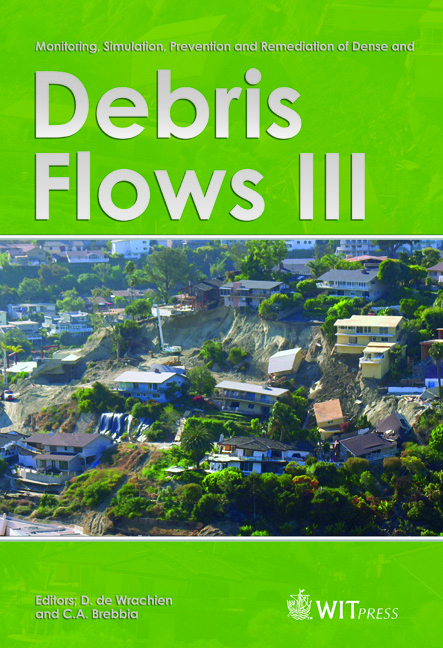Rheological Behaviour Of Pyroclastic Debris Flow
Price
Free (open access)
Transaction
Volume
67
Pages
12
Page Range
51 - 62
Published
2010
Size
718 kb
Paper DOI
10.2495/DEB100051
Copyright
WIT Press
Author(s)
A. M. Pellegrino1, A. Scotto di Santolo, A. Evangelista & P. Coussot
Abstract
The pyroclastic soils that cover the mountains of the Campania region in Italy are usually unsaturated and collapse due to rainfall infiltration triggering landslides. The evolution of these soils after collapse is not well understood. Indeed, their post-failure behaviour may be \“solid-like” or \“fluid-like”, depending on causes that are not well known. The objective of this paper is the study carried out on the rheological behaviour of the \“fluid-like” pyroclastic material with fluid mechanics tools: a vane rotor rheometer and an inclined plane. Two natural pyroclastic deposits have been sampled and different soils-water mixtures have been analysed. The main results have been explained and discussed Keywords: debris flow, pyroclastic soil, solid-liquid transition, rheology, laboratory activity, fluids model, yield stress, critical shear rate. 1 Introduction The Campania region has been covered by pyroclastic deposits generated by different volcanic centres, the most famous of which is the Somma-Vesuvius, which is still active inside the so-called Campanian Volcanic Zone. In this area, pyroclastic soils (mostly ash and pumices) and soft rocks (tuff) have been extensively used since antiquity for construction purposes. The cover is cohesionless and poses severe slope stability problems. The landslides have been classified as translational or rotational sliding or falls that lead to debris flows. As a result of the ceaseless growth and spreading of urbanised areas and
Keywords
debris flow, pyroclastic soil, solid-liquid transition, rheology, laboratory activity, fluids model, yield stress, critical shear rate





